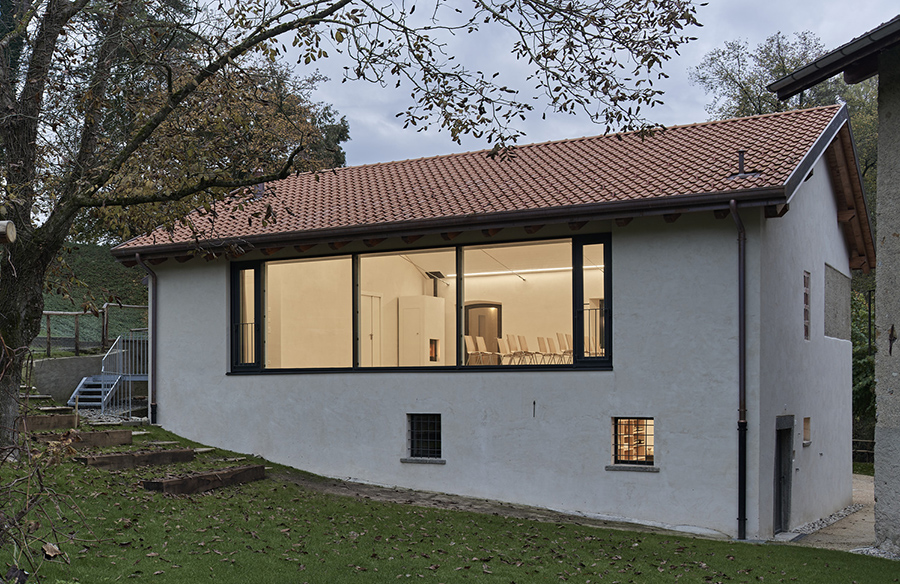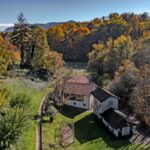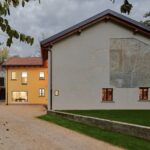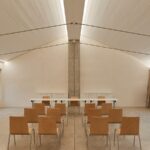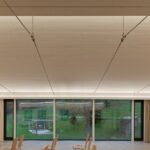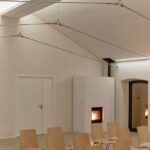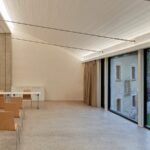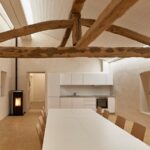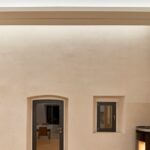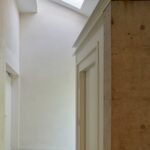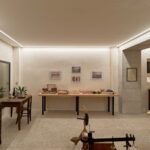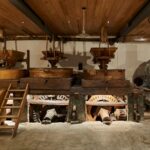Historical Background
The Daniello mill, situated along the Roncaglia stream in the Motta Valley Park, holds historical significance dating back to the early 1800s. Originally serving as a mill and residence for the miller, the building included milling equipment, a stable, garage, barn, and living quarters. Adjacent to the mill are two additional structures, one used for silkworm breeding and the other as an open-sided shed.
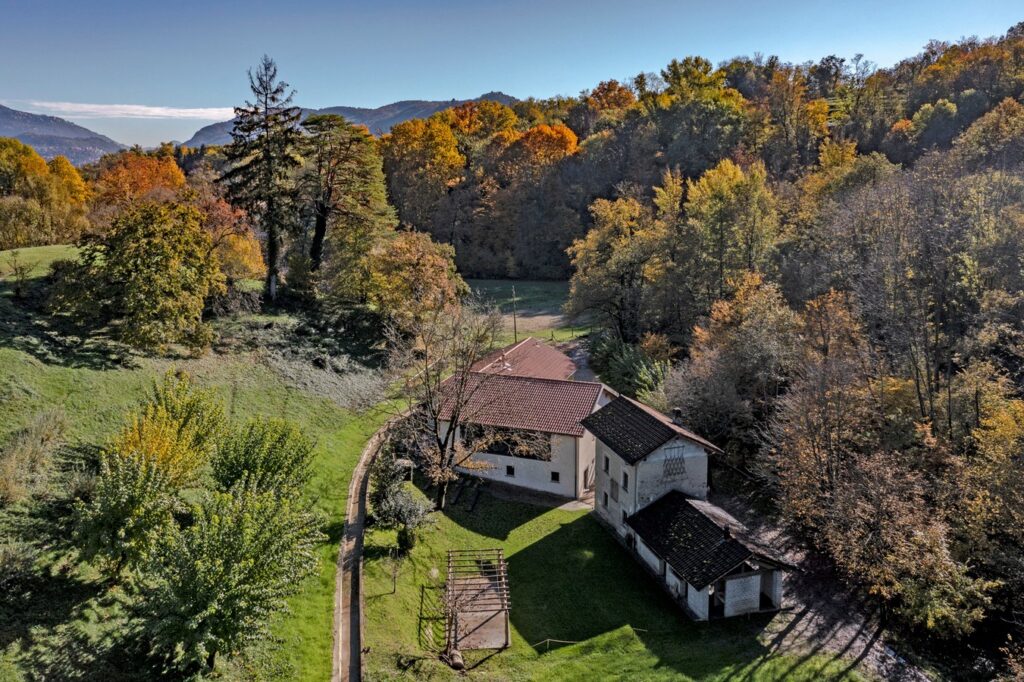
Architectural Features
The mill comprises two intersecting masonry buildings, with the original milling equipment preserved on the ground floor. Notably, three millstones and an oil mill are still operational, powered by external water wheels fed from the canal. The renovation project aims to maintain the building’s volume and original character while repurposing it into an educational-congress center.
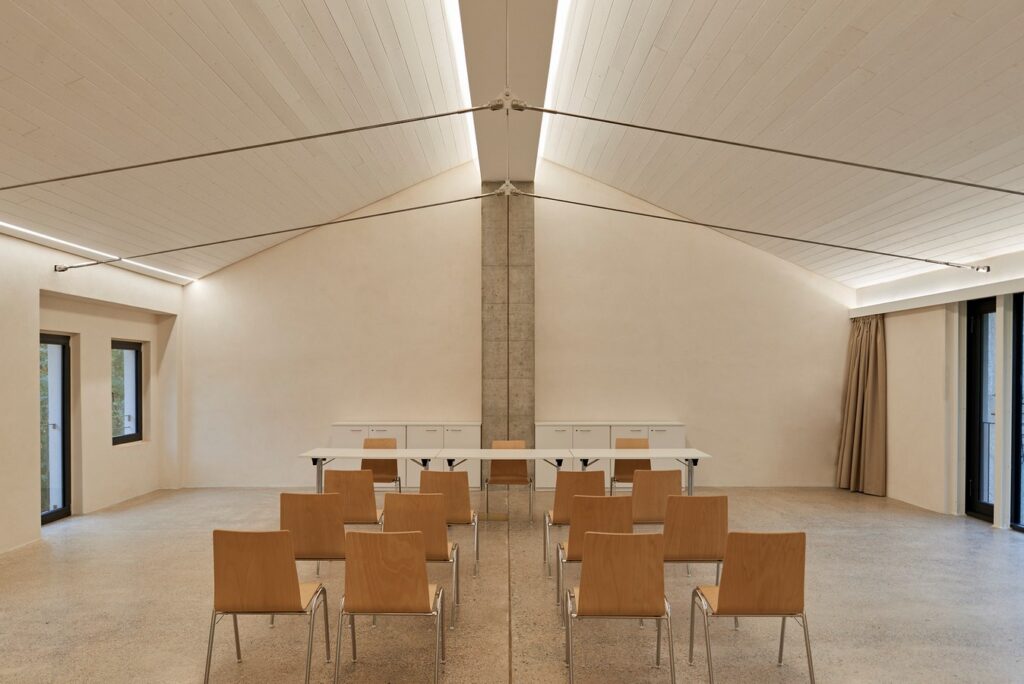
Preservation Efforts
The intervention focuses on conserving and enhancing the historical aspects, particularly the ground floor milling room and the Galli family’s small house-museum. Restorations were carried out without compromising the original appearance, including the restoration of the wooden water wheel and the addition of new spaces for showcasing mill products and historical artifacts.
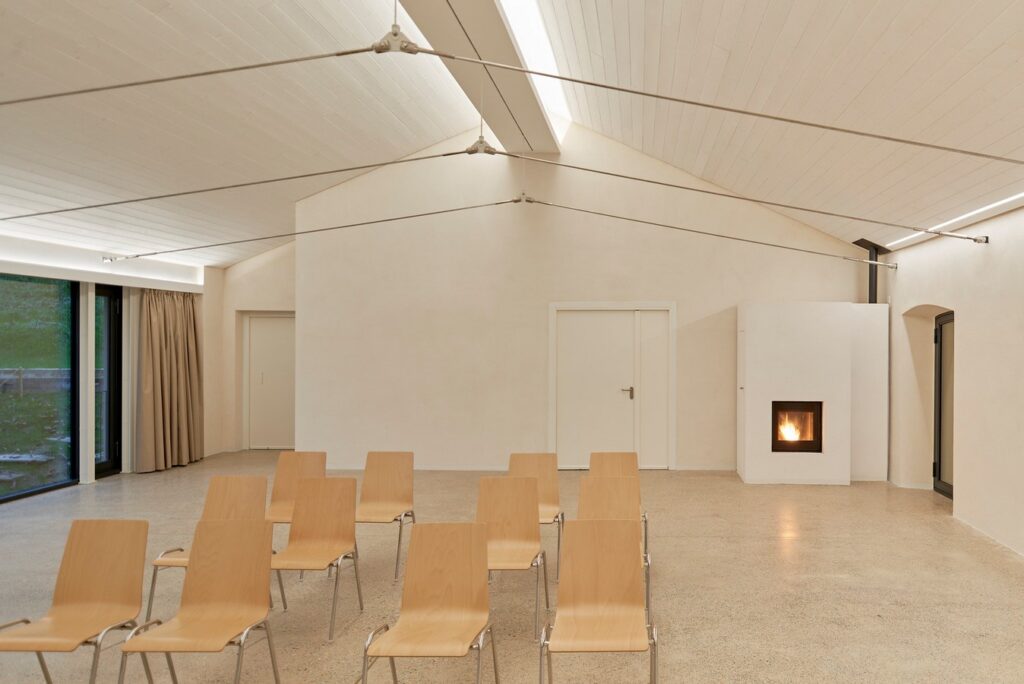
Structural Enhancements
New masonry interventions utilized exposed reinforced concrete, while two new spaces were created on the first floor: a classroom and a multipurpose room. The latter features natural illumination from original openings and a new large window overlooking the park. The roof of the multipurpose room incorporates a metal ridge beam transformed into a lighting fixture.
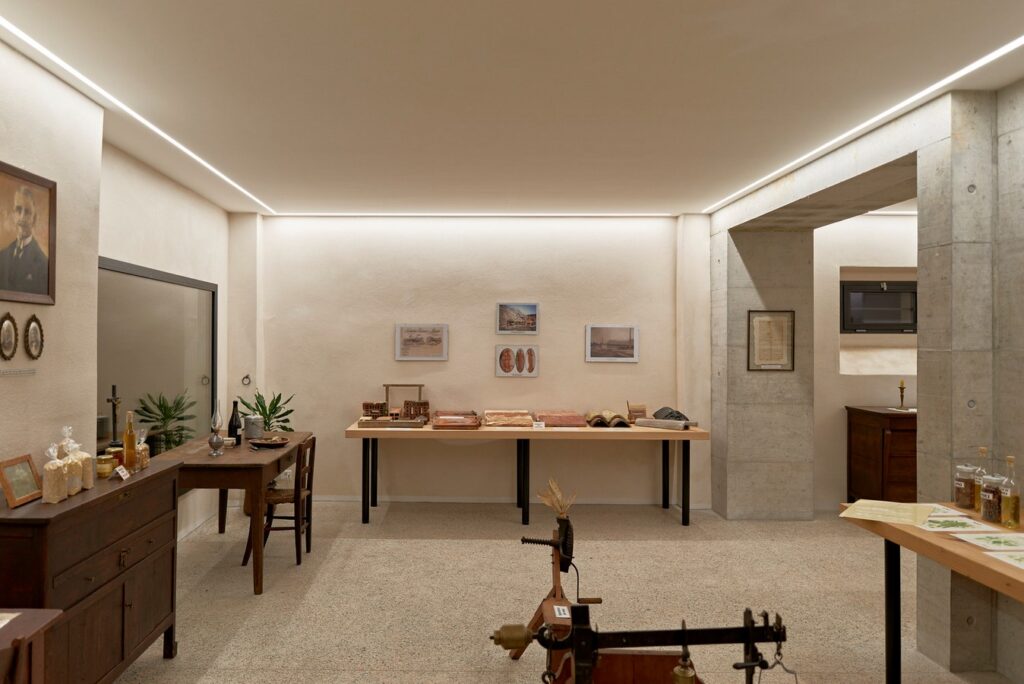
Material Selection and Finishes
The floors are composed of concrete with added red aggregates, providing a textured finish. Heating is provided by pellet stoves, ensuring comfort during colder months. Preservation efforts extended to the facades, with original plaster preserved where possible and lime-based plaster applied to the remaining brickwork. The entrance facades were restored to their original yellow color, preserving the building’s historical aesthetic.
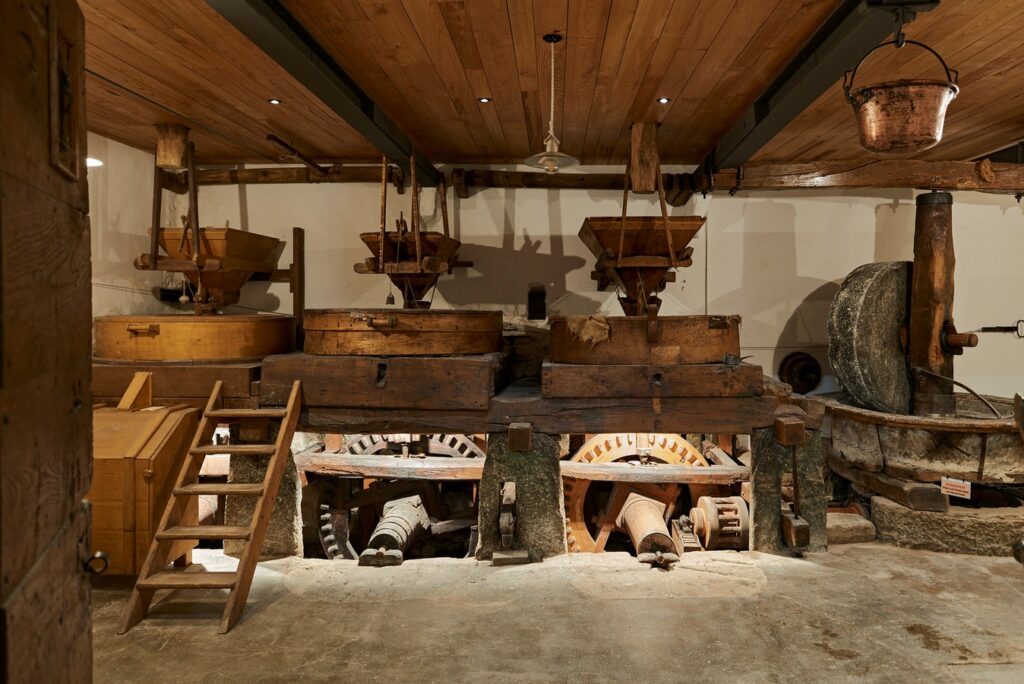
Conclusion
The renovation of the Daniello mill exemplifies a meticulous balance between preservation and adaptation for contemporary use. By retaining its historical charm while integrating modern amenities, the renovated mill now serves as a valuable educational and cultural asset within the community, honoring its rich heritage for generations to come.


